Kensington & Chelsea School District
Prior to 1876, the parishes of Kensington and Chelsea formed part of the North Surrey School District which operated a school at Anerley. However, a rapid increase in the population of the area resulted in Anerley being unable to cope with the demands being made upon it. Accordingly, Kensington proposed to found a school for its own children, then numbering around 200. The Local Government Board agreed to this proposal on condition that Chelsea should join Kensington to form a new joint Kensington & Chelsea School District. St Marylebone also joined the School District in 1920.
Unlike the other Metropolitan School Districts at that time, Chelsea and Kensington decided not to establish a large "district" school. Instead, it opted for a cottage homes development at Banstead in Surrey, together with a "branch" or "intermediate" school in Hammersmith.
Banstead Cottage Homes
The Banstead Cottage Homes were erected in 1878-80 to a design by A & C Harston and were described as giving the impression of "a well-designed model village, delightfully placed amid country surroundings of woodland and downs." The buildings occupied a narrow strip of land alongside a railway line, although the elevated position of the site was said to provide views of Windsor Castle. The layout of the site is shown on the 1894 map below.
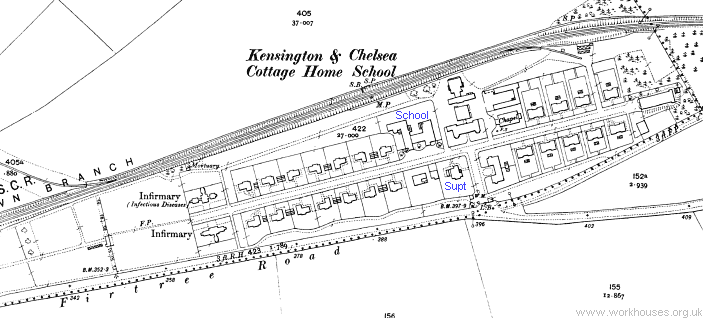
Banstead Cottage Homes site, 1913
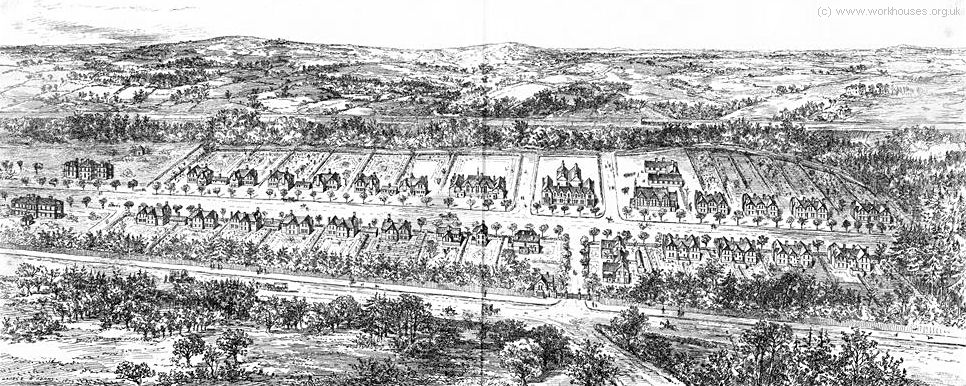
Banstead Homes from the south, 1879.
The children's cottages were mostly named after trees. On the Boys side these were Ash, Beech, Cedar, Almond, Elm, Fir, Hazel, and on the girls' side Acacia, Chestnut, Drake, Jasmine, Laburnum, Larch, Laurel, Lavender, Lime, Maple, Oak, Pine, Thistle, and Willow.
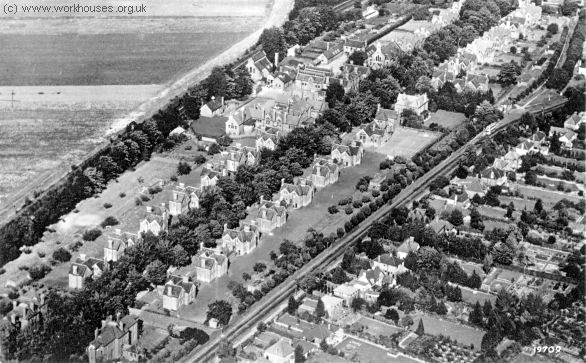
Banstead Homes from the south-west, 1950s.
An account of the buildings from 1898 is given below.
In the centre of this drive lie the administrative and school buildings, consisting of the residence of the superintendent and matron, a house for the school staff, the stores or "village shop," the bakery, laundry, and swimming bath; three schools, two on the north side for boys and girls (a new girls' school has just been added with a covered playground for boys and girls beneath it), and the other on the south side for infants, and the detached chapel.
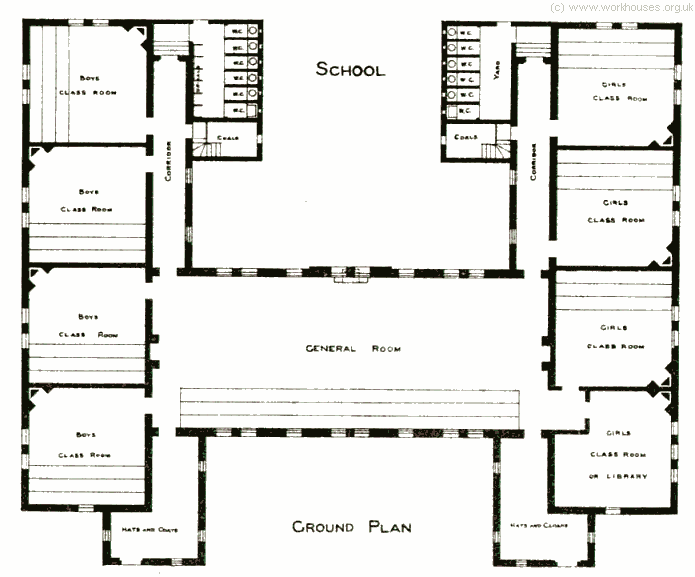
Banstead Homes boys' school plan.
Immediately at the right of the entrance, are two probationary homes, one for girls and one for boys, together capable of holding 40 children, while further to the right, on either side of the drive, are the nine cottages for boys, with accommodation for 40 in each. To the extreme right, a fine bandroom, which is to form part of a future drillroom and gymnasium, has been lately erected at the cost of some 800l. On the left of the entrance and central buildings, the 14 girls' and infants' cottages are ranged, with 26 beds in each ; again to the left of these, come the infirmary with 30 beds, and the infectious block with 18 beds; and beyond these blocks lie the present boys' playfield and a large kitchen garden.The nine boys' cottages are each under the charge of a house father and mother, the former acting as industrial trainer, while the mother attends to the domestic duties of the house and needs of the children. Generally speaking, boys are placed in the house of the father in whose trade they are being instructed, and some of the boys also assist in domestic work.
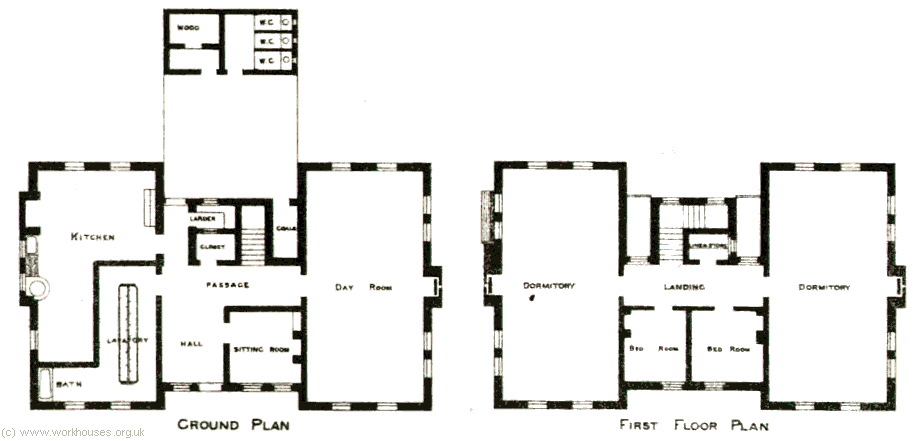
Banstead Homes boys' house plan.
The girls' cottages have small wash-houses attached to them, and some four or five of the elder girls assist the house-mother in washing, cooking, housework, mending clothes, and in looking after the infants of four to seven years of age, who are distributed equally in these cottages.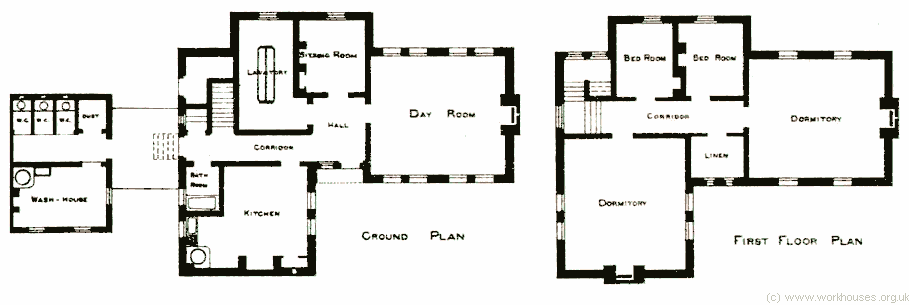
Banstead Homes girls' house plan.

Banstead Homes girls' cottage, 1902.
© Peter Higginbotham.
At the outset, it was determined not to provide a general laundry, but to do all the washing in the small wash-houses at the girls' homes, but it was found impossible to carry out this plan, and a large laundry, with drying chamber, had soon to be erected. A covered swimming bath, capable of being steam-heated, for use at all seasons of the year, was included in this improvement. The chapel is a fine building, and can seat about 500 children, for whom the usual Sunday services are held. The workshops are roomy and well fitted. All the clothing is made on the premises.
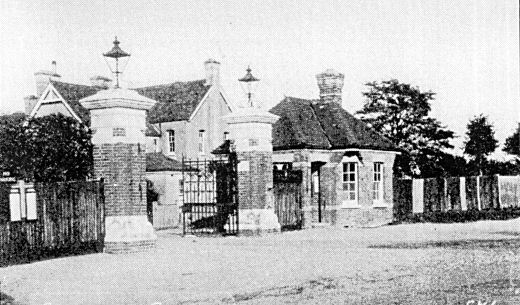
Banstead Homes entrance, c.1910.
The daily life of the children was also described:
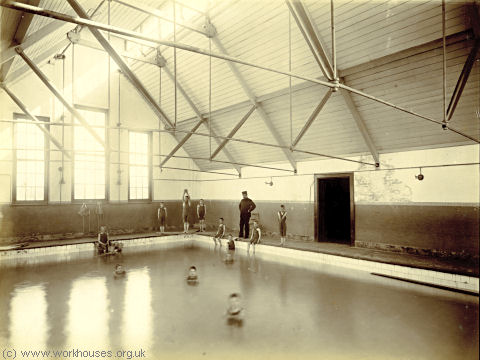
Banstead Homes swimming bath, 1902.
© Peter Higginbotham.
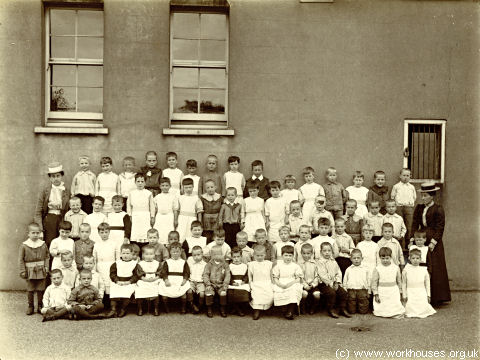
Banstead Homes children and house mothers, 1902.
© Peter Higginbotham.
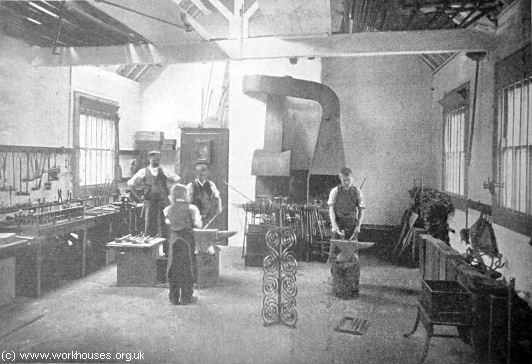
Banstead Homes smithy, 1900.
© Peter Higginbotham.
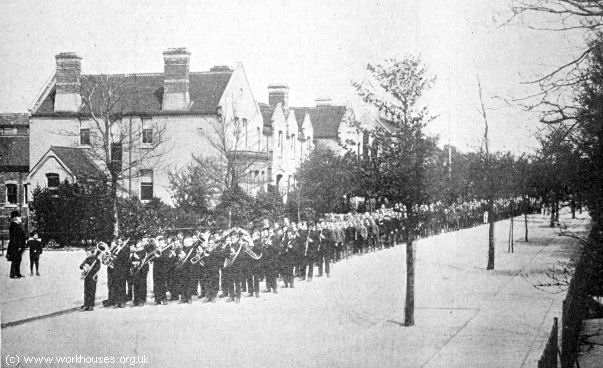
Banstead Homes band and parade, 1900.
© Peter Higginbotham.
Sport was an important part of the homes' activities and its teams were successful in competition. In 1912 and 1913 they won the Monro Cup at the annual meeting of the Metropolitan Poor Law Schools Association at Stamford Bridge.
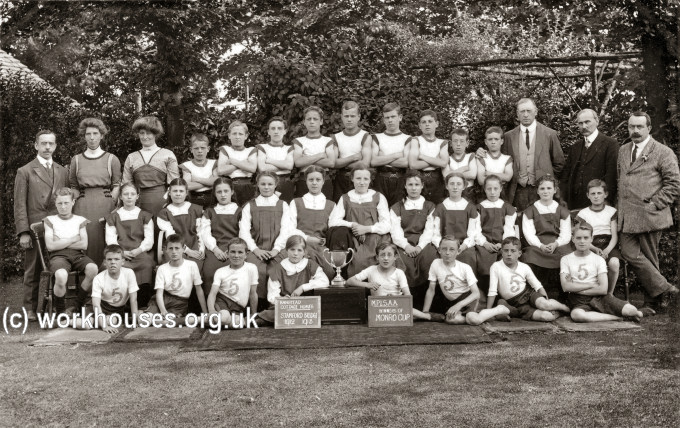
Banstead Homes athletics teams, 1913.
© Peter Higginbotham.
The site was renamed Beechholme in 1951. Its operation was later taken over by Wandsworth Borough Council. The school closed in 1974 and its facilities replaced by a number of modern houses located within the Borough of Wandsworth.
The school buildings no longer exist and the site has been redeveloped as the High Beeches housing estate.
Marlesford Lodge, Hammersmith
Marlesford Lodge "intermediate" school opened in 1883 at a site on King's Street in Hammersmith, opposite the southern end of Ravenscourt Park. It accommodated around 132 children and was also designed by by A & C Harston.
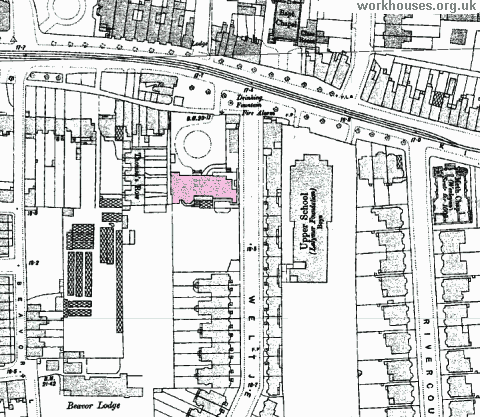
Marlesford Lodge site, c.1893.
The establishment was conceived as a stepping stone or filter for the Banstead Cottage Homes. This was both to prevent unsuitable children from being transferred there, and also to minimise the time children spent in the main workhouse — any child admitted to the workhouse before 2pm was washed and despatched to Marlesford the same afternoon. It dealt with:
- "Ins-and-Outs"
- Children of parents in custody
- Those suffering from slight non-infectious ailments
- Those awaiting transfer to Banstead, including those falling below its minimum admission age of four
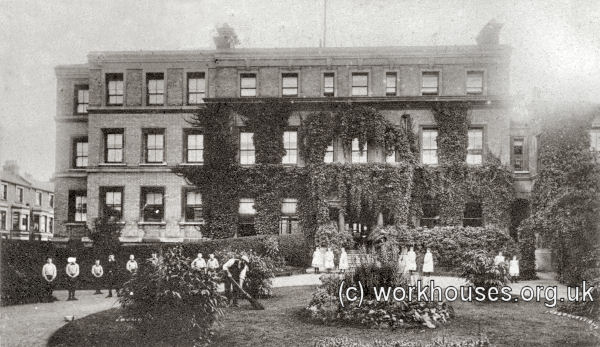
Marlesford Lodge from the north, c.1905.
© Peter Higginbotham.
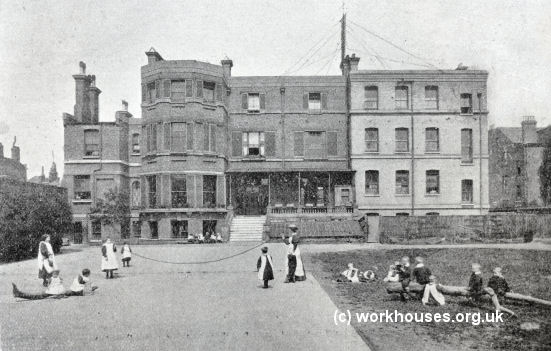
Marlesford Lodge from the south, 1900.
© Peter Higginbotham.
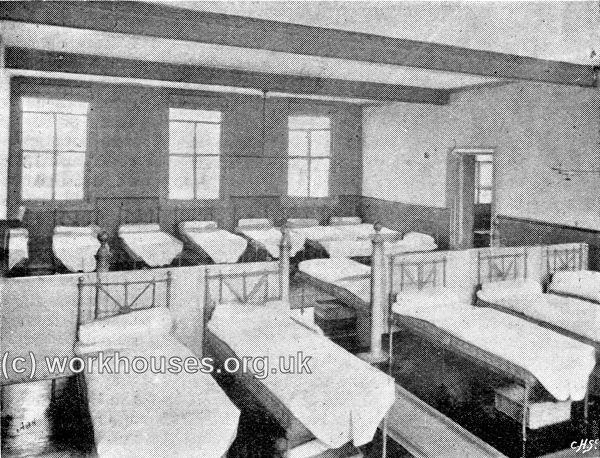
Marlesford Lodge dormitory, 1896.
© Peter Higginbotham.
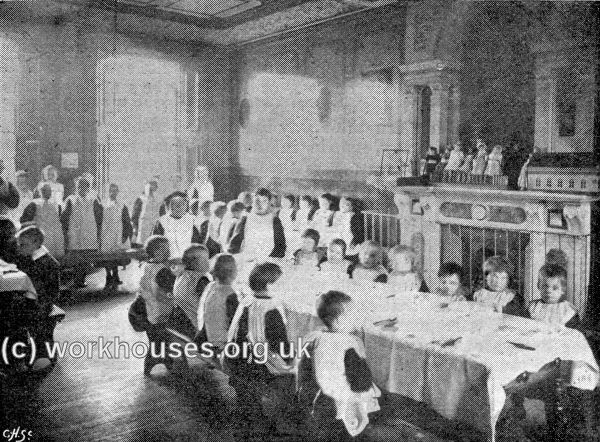
Marlesford Lodge dining room, 1896.
© Peter Higginbotham.
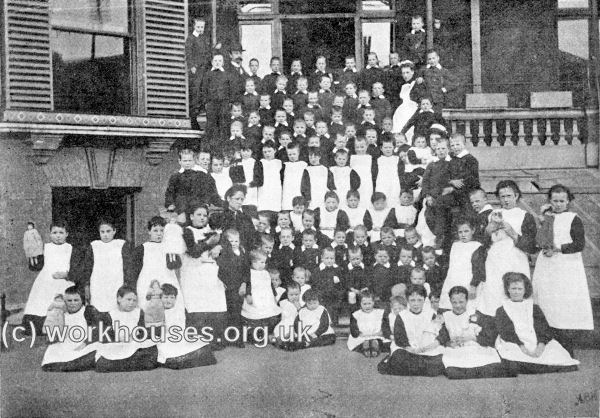
Marlesford Lodge inmates, 1896.
© Peter Higginbotham.
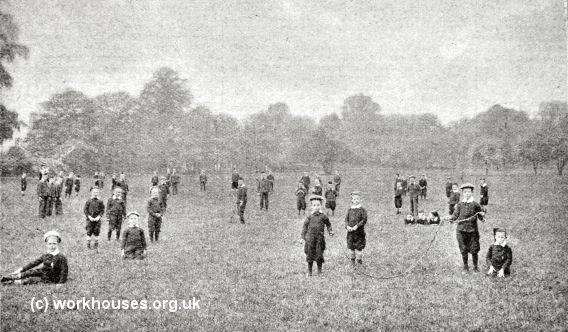
Marlesford Lodge children in the park, 1900.
© Peter Higginbotham.
The site later became a home for 'mentally defective' children. In more recent times, the property became known as Palingswick House, accommodating a library and museum, and also housing a number of charities. In 2012, the site was sold to the West London Free School.
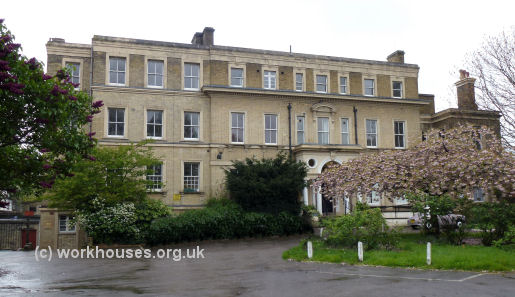
Marlesford Lodge from the north-east, 2012.
© Peter Higginbotham.
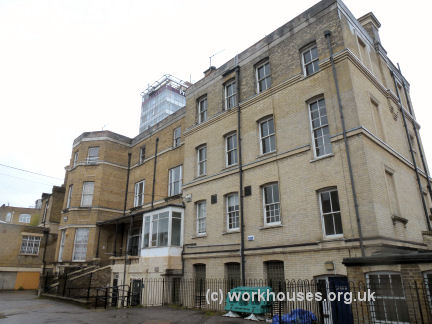
Marlesford Lodge from the south-west, 2012.
© Peter Higginbotham.
Records
Note: many repositories impose a closure period of up to 100 years for records identifying individuals. Before travelling a long distance, always check that the records you want to consult will be available.
-
The
Ancestry UK
website has two collections of London workhouse records (both name searchable):
- Westminster workhouse records are available on FindMyPast, .
-
London Metropolitan Archives, 40 Northampton Road, London EC1R OHB.
Holdings (1876-1934) include:
- Minutes and agendas of the Board; Superintendent's reports; Committee minutes; Financial accounts; Inspection reports; Annual reports; regulations, standing orders and instructions; Correspondence; Inventories of furniture at Marlesford Lodge; Admission and discharge registers and creed registers for Marlesford Lodge and Banstead Schools; Superintendent's weekly returns and journals; Registers of staff; Buildings plans of Banstead School and Marlesford Lodge
- Bermondsey Guardians: Admission and discharge register of Banstead Road School (1903-12, arranged alphabetically); Weekly returns of Banstead Road, Sutton (December 1893-May 1902)
- Kensington Guardians: Register of children chargeable to Banstead (KCDS) and Marlesford Lodge, Hammersmith (1879-1931)
Bibliography
- Higginbotham, Peter Workhouses of London and the South East (2019)
- Marshall, Geoff (1998) Beechholme: the school on Banstead's breezy downs (Banstead, Banstead History Research Group)
Links
Unless otherwise indicated, this page () is copyright Peter Higginbotham. Contents may not be reproduced without permission.


